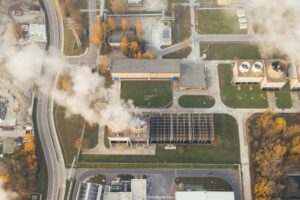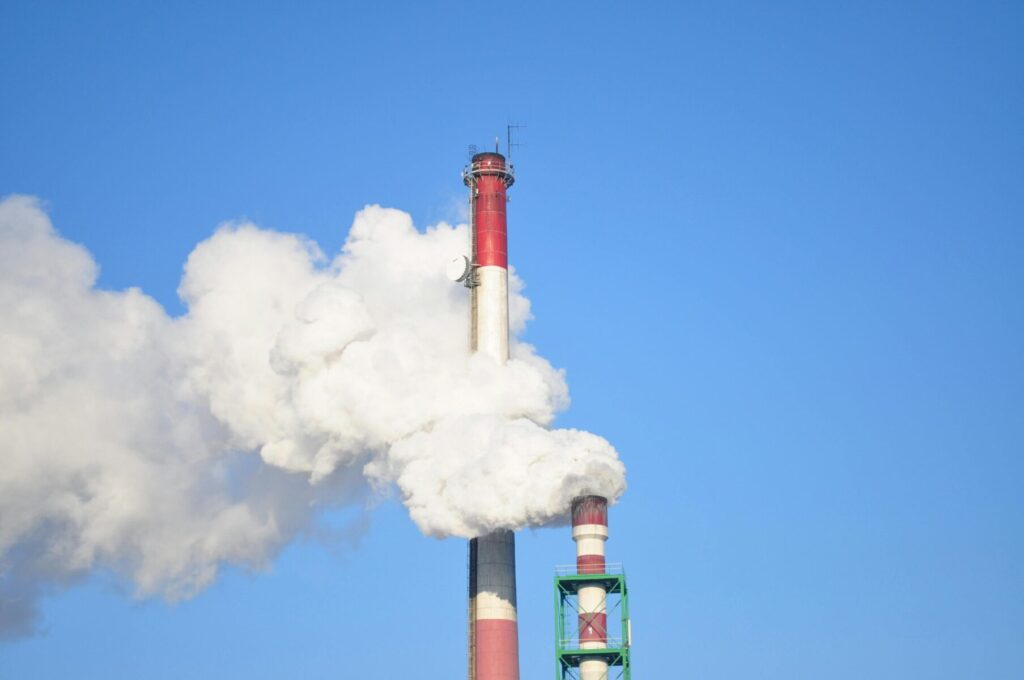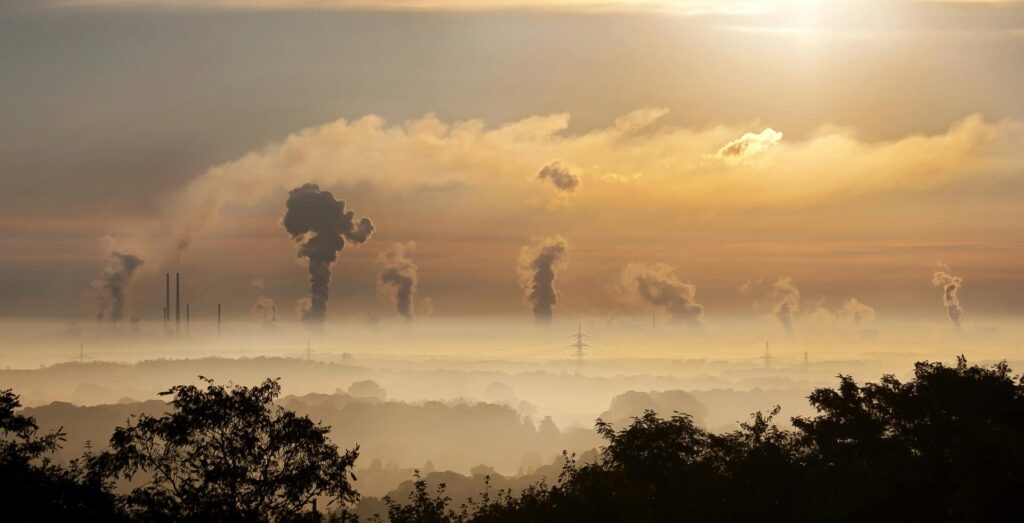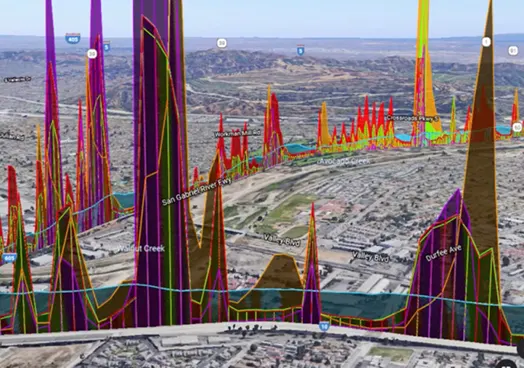
Measuring and verifying air pollution can be challenging. For businesses and original equipment manufacturers (OEMs), understanding the difference between primary vs. secondary pollutants is key to creating a profitable and safe operation.
First, we need to know the difference between the two and what can be done to keep them in check.
But, where do you start? And what makes primary pollutants different from secondary pollutants?
If you’re looking to understand primary versus secondary pollutants, you’ve come to the right place. GlobalMRV here: for over a quarter century, we’ve provided sustainability consulting solutions for businesses and OEMs for leak detection and repairs, vehicle emissions testing, and other industrial processes.
In this article, our sustainability experts will walk you through the following pollution-related topics:
- Common sources of pollutants
- Common classifications of air pollutants, including primary and secondary pollutants
- The challenge with secondary air pollutants and how they interact with air pollution
- A breakdown of common primary and secondary air pollutants
Common sources of pollutants

Before we dive into the different classifications of pollutants, let’s take a look at where they come from.
Pollutants originate from a variety of sources, both natural and human-made, such as combustion processes, industrial activities, vehicles, and even natural events like wildfires or volcanic eruptions.
One example of a common pollutant is particulate matter (PM), which consists of tiny solid particles and liquid droplets suspended in the air. PM2.5, also known as fine particulate matter, is defined as particles with an aerodynamic diameter of 2.5 microns or less.
These fine particles can be emitted directly from sources like the combustion in motor vehicles, power plants, mining, and logging, or formed in the atmosphere.
Similar to PM2.5 is PM10, which includes particles with an aerodynamic diameter of 10 microns or less. Coarse PM, often dubbed PM10-2.5, refers to particles between 2.5 and 10 microns. PM10-2.5 is produced from dust on or around roads, or by natural wind-blown dust.
What’s more, PM 10-2.5 is also produced by mechanical processes like crushing or grinding materials, or internal combustion engine vehicles, also known as ICE vehicles or ICEVs.
To place these sizes in perspective, a human hair is about 50-70 microns in diameter, a size that’s much larger than PM2.5 or PM10 particles.
As we learn a little more about sources that produce air pollutants, similar to our above example of particulate matter (PM), let’s take a look at common classifications of air pollutants in the next section.
Common classifications of air pollutants

Air pollutants can be classified in many ways, such as their physical composition, the source of the pollutant, and their health impact on our environment and living beings..
Criteria Air Pollutants, also called common air pollutants, are regulated under the National Ambient Air Quality Standards (NAAQS). These pollutants include:
- Particulate matter (PM)
- Ground-level ozone (O₃)
- Carbon monoxide (CO)
- Sulfur dioxide (SO₂)
- Lead (Pb)
- Nitrogen dioxide (NO₂)
Hazardous Air Pollutants (HAPs) are toxic pollutants that can cause serious health effects, such as cancer, reproductive issues, or birth defects. Common HAPs include:
- Benzene
- Dioxins
- Asbestos
- Toluene
- Metals such as cadmium, mercury, and chromium
Both criteria pollutants and HAPs can exist as solids, liquids, or gases. These pollutants can be ultrafine or coarse and contribute to toxic environments if not monitored.
For example, the EPA monitors and regulates gaseous forms like ground-level ozone, nitrogen dioxide, and volatile organic compounds (VOCs) produced by OEMs and industrial processes.
If you’re building a product subject to the EPA’s Method 21 for VOC leak detection, you’ll want to be aware of which pollutants require special attention.
Let’s explore the types of pollutants —primary and secondary — that OEMs and industrial operations must monitor to stay compliant with the EPA and other regulatory groups.
Primary pollutants
Primary pollutants are emitted directly into the atmosphere from a specific source. Sources can be human-made (like ICEVs or OEMs) or natural (like wildfires or volcanoes).
Examples include particulate matter (primary PM), carbon monoxide (CO), nitrogen oxides (NOx), sulfur dioxide (SO₂), and volatile organic compounds (VOCs).
In other words, primary pollutants are released straight from the source without undergoing chemical changes in the atmosphere first.
Secondary pollutants
Secondary pollutants aren’t emitted directly. They form when primary pollutants react in the atmosphere with each other, sunlight, water vapor, or other compounds.
For example, ground-level ozone is a secondary pollutant created through photochemical reactions between NOx, VOCs, and sunlight.
Another example of secondary pollutants is acid rain. Acid rain forms when SO₂ and NOx are oxidized in the atmosphere to sulfuric acid (H₂SO₄) and nitric acid (HNO₃).
Sulfuric and nitric acid then dissolve in water droplets and fall as acidic precipitation.
Secondary pollutants can arise from both human-emitted primaries and natural processes, but their formation is driven by well-studied atmospheric chemistry. Complexities like weather and emissions mixtures can make predicting secondary pollutants challenging, especially since the weather can’t be predicted or modelled accurately.
Since secondary pollutants like ozone can harm health and the environment, many companies focus on measuring and reducing primary pollutants to prevent their formation.
The challenge with measuring secondary pollutants and air pollution interactions

Whether from vehicle emissions, fuel combustion, or industrial processes, measuring air pollutants is complex due to their dynamic interactions. Pollutants often don’t exist in isolation but react in ways influenced by temperature, humidity, and other factors.
Understanding how particle pollution affects human health and the environment is key to reducing its harmful effects. Through our Axion and Firefly portable emissions measurement systems (PEMS), we design custom emissions monitoring solutions to help measure internal combustion engine vehicle (ICEV) emissions and pollutants from core industrial processes.
We use non-dispersive infrared (NDIR), Tunable Diode Laser Absorption Spectroscopy (TDLAS), Ultraviolet Resonance Absorption Spectroscopy (UVRAS), and diffusion charging with escaping current technology for PM and PN technologies. Using these technologies, we’re able to sample and analyze gaseous emissions to identify substances and provide actionable insights for more informed decisions toward a greener, cleaner future.
Did you know?
Did you know that making slight mechanical adjustments to a check valve in trucks can reduce vehicle emissions? Adjusting the check valve to ensure that it opens when the truck’s pressure point is reached is a quick, cost-efficient way to lower vehicle emissions.
What’s more, our portable emissions measurement systems (PEMS), integrated PEMS (iPEMS), and mini-PEMS can be used to investigate even the smallest of opportunities to reduce emissions — no costly dynamometers are needed. And, we know that as regulations get tighter, finding small corrections that can be repeated multiple times will exponentially grow emissions reductions. The only way to do this is with simple, flexible, and hybrid systems like Axion or Firefly.
To learn more about cost-efficient ways to reduce vehicle emissions with check valves and our cost-effective, easy-to-use PEMS units, check out our post on Instagram.
Summary: Primary pollutants versus secondary pollutants

| Primary pollutants | Secondary pollutants |
| 1. Definition: Emitted directly from sources, which can be human-made or natural. 2. Examples: particulate matter (PM), carbon monoxide (CO), nitrogen oxides (NOx), and sulfur dioxides (SO₂) | 1. Definition: Pollution that’s formed through chemical reactions in the atmosphere involving primary pollutants, sunlight, and other elements. They’re challenging to control due to their indirect formation but are well-understood through atmospheric science. 2. Examples: Ground-level ozone (O₃), acid rain, photochemical smog, and secondary organic aerosols. |
Measure and verify pollutants with confidence with GlobalMRV

Being aware of primary and secondary pollutants is key for industry leaders and OEMs. The success of your product and services relies on your ability to monitor, report, and verify key pollutants.
Especially since transportation, power plants, and industrial processes have historically emitted the largest share of volatile organic compounds (VOCs) in the U.S. (Statista.com, 2024), understanding the real-time impact of our manufacturing processes is crucial for reducing human-driven air pollution.
If you’re an original equipment manufacturer (OEM) or business working with industrial processes, and if you need efficient, adaptable equipment to measure your company’s environmental footprint, we invite you to explore our portable emissions measurement systems (PEMS).
Our team of Ph.D. researchers, managers, analysts, engineers, and technicians has run more than 60 different types of diagnostic testing regimes and supported hundreds of different vehicles and engines for overall emissions reduction, vehicle improvement, and fuel calibration testing.
If you’re looking to make your operation cleaner and greener, give us a call. Contact us today for your risk-free, zero-obligation trial of our PEMS devices.
We look forward to realizing a greener, cleaner tomorrow with you.
Measure, Report, & Verify Primary/Secondary Pollutants With Ease.